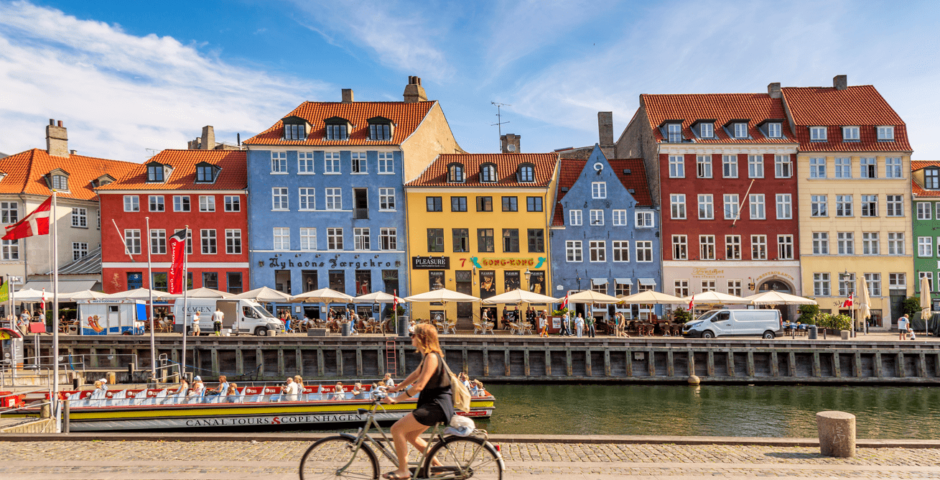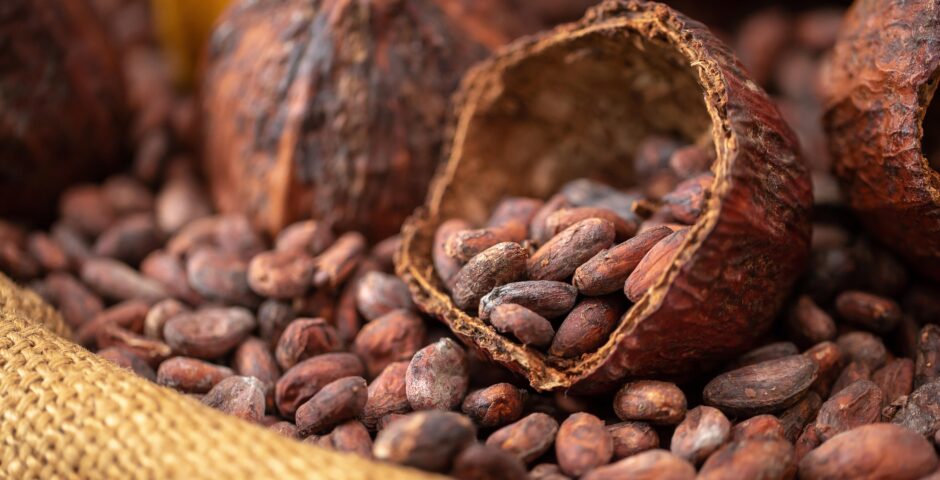Profile of EU member Denmark: unrealistic guide country on migration

Looking back at the 2019 EP elections and a look ahead to those in 2024.

Denmark. The land of Lego, bicycles, the Little Mermaid, and Hygge (“coziness”). The country of Europe’s oldest monarchy and the world’s oldest recognized flag. The country is one of the happiest in the world year after year. Of prosperity, politeness, and progression. Where smørrebrød and Kanelsnegle are frequently baked and eaten. The land of Vikings, green energy, crime shows, and grasslands. Of Hans Christian Andersen, Jante’s Law (“no one is better than another”), and three extra letters in “their” Latin alphabet (æ, ø and å). In addition, the country is a kingdom along with Greenland and the Faroe Islands.
When one thinks of Denmark, the above is probably the outcome. It is a cozy and safe country, where everything is well organized. Everything is just fine… until you look at broader social and political developments. Then you also see the unrest that regularly arises, for example after Koran burnings in recent years or by the controversial national approach regarding so-called “ghettos” (2021-2022). Indeed, while several European countries are still struggling with their migration approach, Denmark’s has been clear for a few years: strict, perhaps even the “strictest” in Western Europe. With various measures, Denmark is trying to reduce migration. This has made the country a “guiding country” in this area for many right-wing voters and politicians in the EU. The question, however, is whether this idea is justified.
This article provides an overview of Danish politics and of Denmark in the European Union (EU). When did Denmark become part of the EU? Do residents of Greenland and the Faroe Islands also vote? What issues were important in the 2019 European elections? And what will the campaign look like next? This is the first article in the series ‘EU country profiles’, written in the context of the European Parliament (EP) elections in June 2024. Curious about the profiles of other EU countries? Then read next time about Hungary – the land of Orbán, Budapest, and Euroscepticism.
Denmark: A Political Overview
Greenland, Faroe Islands and Denmark
The Kingdom of Denmark consists of the country of Denmark itself and the autonomous territories (selvstyrende områder) of Greenland and the Faroe Islands. The latter are so-called “overseas countries and territories,” or OCTs. OCTs are not part of the joint territory of the EU, also called the Community Territory, so EU law does not apply here. Greenland, a mega island (2,166,000 km², while Germany, for example, is 357,592 km²) located in the North American Arctic, does not vote in EP elections.
The reason is not that the country is an OCT. For example, residents of the Dutch OCT the Netherlands Antilles have been allowed to vote in European elections since 2006. In Greenland, however, the situation is different. The autonomous region, an area generally distinguished from the rest of the country with its own language and culture and with a limited degree of independence and self-government, stepped down as part of the European Communities (EC) – the predecessor to the EU – on 1 January 1985. This happened after a referendum determined that the inhabitants no longer wanted to be a member of it. You could say that thus not the United Kingdom (UK), but Greenland was the first “territory” to leave the EU, or okay, the EC (or the second, considering that Algeria was also no longer part of the EC after France’s independence in 1962). So for this reason, there will be no voting in the EP elections in Greenland. For that matter, the Faroe Islands, located in the North Atlantic, are also not voting in EP elections because, as stipulated in the Treaty of Rome, the region is not part of the EU and the Schengen zone.
Although Greenland and especially the Faroe Islands frequently do business with (countries from) the EU, the relationship has not always been good. Just about a decade ago, for example, the EU introduced a trade boycott for herring and mackerel against the Faroe Islands. In what has also been called the “mackerel war” or the “herring dispute”, disagreements arose over Faroese overfishing in EU waters. Negotiations eventually ended the wrangling in 2014, but the relationship regarding this issue remains somewhat strained at times. The relationship between the Kingdom of Denmark, on the one hand, and Greenland and Faroe Islands, on the other, is also not too good at times. Although Copenhagen continues to emphasize the credo “it’s better together”, calls for independence are growing in Nuuk (Greenland), and Tórshavn (the Faroe Islands).
Scandinavian Denmark, the only official country in the Kingdom, is located on the mainland of northern Europe, quite a bit further south than the rest of Scandinavia. The rest of this article is mainly about the country of Denmark rather than the Kingdom of Denmark, since – as just discussed – Greenland and the Faroe Islands are not part of the EU.
The country of Denmark: geography
Denmark is a country of islands: it consists of 405 islands that make up the Danish archipelago. The largest island is Zealand, where the capital Copenhagen is also located. Other well-known islands include Funen, Lolland, Falster, and Amager, and the peninsula Jutland that borders Germany. Other islands are mostly connected by bridges. This is also how Denmark and neighboring Sweden are connected. Besides beautiful Copenhagen, Denmark has other attractive cities, such as Aarhus, Odense, Aalborg, and Kolding. Most Danes live in these urban areas.
A total of 5.8 million people live in Denmark. The population density is 136.2/km². Besides urban areas, Denmark has forests, coastal areas, and a lot of agricultural land. In recent years, the country has been in demand by young European farmers, for example from the Netherlands. If you look at GDP, Denmark is one of the most prosperous countries in Europe and even in the world. The quality of life is high, and so is life expectancy. However, the country is facing a rapidly ageing population. This increases the pressure on healthcare, for example.
Danish national politics
Denmark is a constitutional monarchy, has a parliamentary system, and the head of state Queen Margrethe II has only a ceremonial function – so this is quite similar to the political system of the Netherlands. Denmark’s current prime minister is Mette Frederiksen, who belongs to the Social Democratic Party (Socialdemokraterne, SD for short). Frederiksen has been prime minister since June 2019 and succeeded Lars Løkke Rasmussen, a member of the liberal and center-right Venstre party. A fun fact is that Frederiksen was not Denmark’s first female prime minister, as that was Helle Thorning-Schmidt. She was prime minister, also on behalf of the Social Democrats, from 2011 to 2015. So Denmark’s women’s empowerment in politics is in good shape.
The current coalition in Denmark sits as of December 2022, so currently just over a year. The coalition consists of the Social Democrats, the liberal Venstre Party, and The Moderate Party (Moderaterne, abbreviated M), founded by the aforementioned former prime minister Rasmussen. Together, the three parties hold 89 of 179 seats, which is just short of a majority. However, because the government is supported by four parliamentarians from Greenland and Faroe Islands who often do not concern themselves with Danish domestic issues, the coalition still has a “majority,” so to speak. Historically, Danish politics has been characterized by social democratic cabinets, although in the last decade, there has been an alternation of left and center-right cabinets.
Denmark and the EU: the land of opt-outs
Denmark applied to join the European Communities on Aug. 10, 1961. After a long procedure, the country finally joined the EU on 1 January 1973, at the same time as Ireland and the United Kingdom. The biggest reason for Denmark’s interest in the EU was to secure its agricultural exports to the UK. The Danish people were allowed to decide by referendum whether their country should join the EU. In the end, a majority of 63% voted in favor.
The EC was popular in Denmark, yet the country is known to be euro-critical. Not in the same way as Hungary or Poland (a 2019 poll showed that only 8% of Danes want a DEXIT), but the country is reluctant when it comes to further European integration. The country uses several opt-outs (an exception clause), which you can read more about in this article, such as on participation in the Economic and Monetary Union (Denmark did not adopt the euro) and on participation in European asylum and migration policy.
The latter opt-out means Denmark does not have to comply with the EU’s minimum conditions for the reception of asylum seekers. For example, Denmark confiscates possessions worth more than ten thousand Danish kroner (about 1,344 euros), so that the asylum seeker contributes to the reception. Also, Denmark – as one of the few European countries – deports Syrians back to Syria because (the area around) Damascus is considered safe, and only temporary residence permits are given. To get a permanent residence permit, a migrant must meet strict requirements. Finally, Denmark supports the controversial idea of hosting asylum seekers outside the EU, in Rwanda for example.
Denmark’s approach to asylum is working in the sense that the number of asylum applications has dropped considerably. Still, Denmark is regularly criticized for its asylum policy. The fact that the country accepts very few asylum seekers means that more refugees have to be taken in by Sweden, Germany and the Netherlands, for example. Copenhagen claims to strive for humane reception, but partly because of this, the shelter in the Dutch town of Ter Apel – according to EU correspondent Caroline de Gruyter – is overcrowded. The Danish approach thus contributes to inhumane situations across the border. Denmark, however, does not heed this criticism. In 2022, then-Minister of Immigration and Integration Mattias Tesfaye said he considers the current European asylum system “a big lie,” and Europe, moreover, “naive”.
Much of the right side of the EU political spectrum sees Denmark as a guiding country on migration. After all, if even a socially democratic country like Denmark has a stringent migration policy, why doesn’t the Netherlands, for example? The answer is simple: the Netherlands does not have opt-outs. Countries can request an opt-out when new treaties are introduced that form part of the EU’s constitutional basis. The last treaty where countries could apply for opt-outs was the Lisbon Treaty of 2007. So countries that lean toward the Danish approach have missed the boat. That Denmark is an example for many right-wing politicians and voters on migration is thus understandable, but, for now, unrealistic.
2019 EP elections: decline in Eurosceptic parties
The previous EP elections took place in Denmark on May 26, 2019. The vote turnout was 66.1%. This was the highest ever turnout in an EP election in the country! Denmark currently has fourteen seats out of 705, but in the previous election, there were thirteen. The liberal Venstre party was the winner of the election, gaining three seats. The moment the UK left the EU, Denmark gained an extra seat and it went to someone from the Venstre party. So in this way, the party ended up with four seats. The Social Democrats came second in the election. The final outcome was as follows:
| Party | Seats |
| Venstre, Danmarks Liberale Parti (liberals) | 3-4 (23,50%) |
| Socialdemokratiet (social democrats) | 3 (21,48%) |
| Socialistik Folkeparti (socialists) | 2 (13,23%) |
| Radikale Venstre (socialist/liberals) | 2 (10,07%) |
| Dansk Folkeparti (Euroskeptists) | 1 (10,76%) |
| Konservativt Folkeparti (conservatives) | 1 (6,18%) |
| Enhedslisten – De Rød-Grønne (socialistic – green) | 1 (5,51%) |
| Folkebevægelsen mod EU (Euroskeptists) | 0 (3,70%) |
| Alternativet (green) | 0 (3,37%) |
| Liberal Alliance (liberals) | 0 (2,20%) |
In the 2019 EP elections, the Dansk Folkeparti (Danish People’s Party) lost three out of four seats and the Folkebevægelsen mod EU (People’s Movement Against the EU) lost its only seat. The 2019 elections thus saw a drop in votes for Eurosceptic parties.
Several issues were important during the election, including climate change, immigration, and Brexit – after all, the fact that the UK once applied to become an EU member was the reason Denmark wanted it too. However, the fact that the Eurosceptic parties lost voters was not necessarily due to a changing perspective of the EU, but because of internal problems. A party member of the Danish People’s Party resigned because of a lack of transparency within the party. It was also revealed that the party had misused EU funding. This forced the party leader, Messerschmidt, to resign. He was succeeded by Anders Visitisen. People do not like turmoil in parties and you saw that right away in the 2019 EP elections.
EP Elections 2024: A Look Ahead
In early October, Denmark announced the date for European elections: Sunday, June 9, 2024. This year, Denmark will gain another seat (the total number of seats in the EP increasesfrom 705 to 720), allowing the country to elect a total of 15 MEPs. The elections are still fairly far away and the campaigns have yet to begin, so it is not really a topic of conversation yet. However, some of the party leaders have already been elected. For example, Christel Schaldemose will be the leader for the Social Democrats, Henrik Dahl for the Liberal Alliance, and Morten Løkkegaard for Venstre. Moreover, it has already been announced that several parties will form an “electoral alliance” for the EP elections. The Conservatives and Liberal Alliance, for example, are forming a list together.
Although Eurosceptic parties declined in popularity in 2019, Euroscepticism has not disappeared in Denmark. It will be interesting to follow what the Eurosceptic parties will do in the upcoming elections, especially since – so far – there have been few internal struggles within those parties. Regardless, climate and immigration in particular remain an important issue for Danes.
Recently, Denmark has frequently been in the news because of Koran burnings and the unrest that ensues. The burnings put relationships between individuals and relations with other countries at risk. Although Denmark does not want to interfere with freedom of expression, now – because of national security concerns – the public burning of religious objects may be banned. This in turn leads to discussion among right-wing voters.
Right-wing and nationalist sentiment is growing in Denmark, as in many other European countries. At the same time, Denmark is also increasingly facing criticism from abroad. Because of their migration approach, because of discrimination in dealing with so-called ghettos, or because of the use of opt-outs. The coming months will reveal which parties will win or lose voters, and which parliamentarians will take their seats in the EP. What is especially interesting is that Denmark will be president of the European Union in the second half of 2025. Since the EU president will partly determine the Union’s priorities, it is all the more relevant to follow which direction Danish politics will take.
Loes ter Horst is pursuing a master’s degree in Middle East Studies (University of Amsterdam). Last summer, she earned the MSc in Crisis and Security Management (Leiden University), having previously completed the BA in Liberal Arts and Sciences (Utrecht University).
Image: Shutterstock




